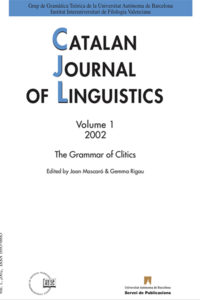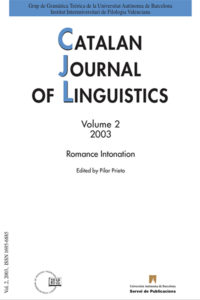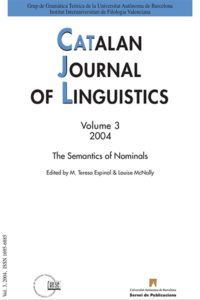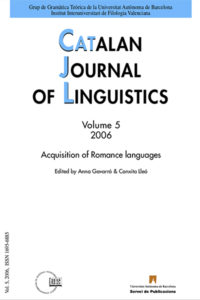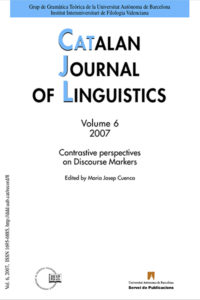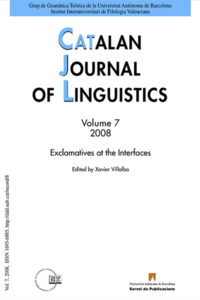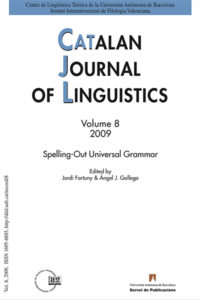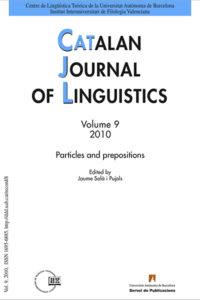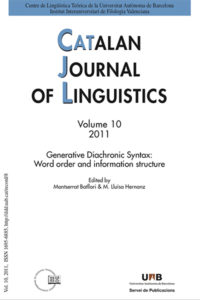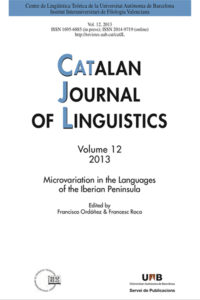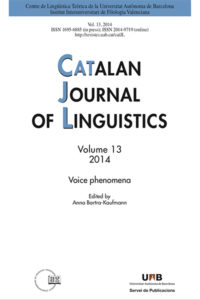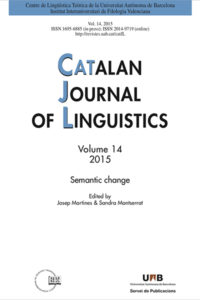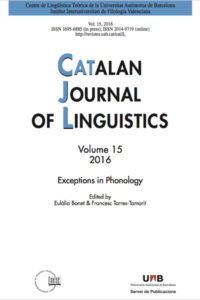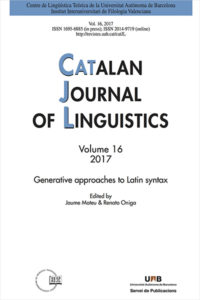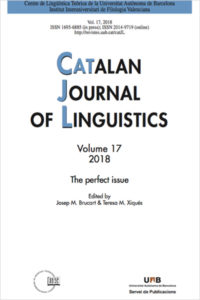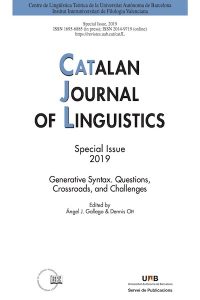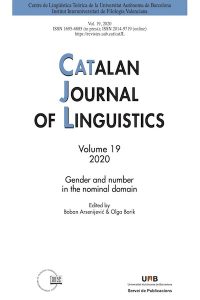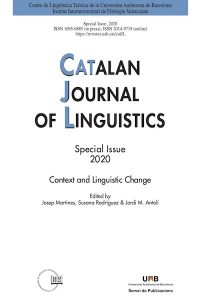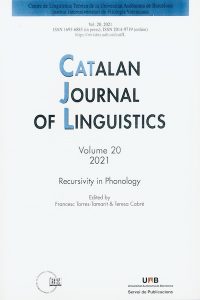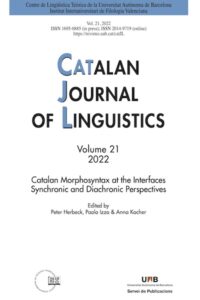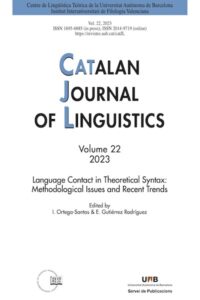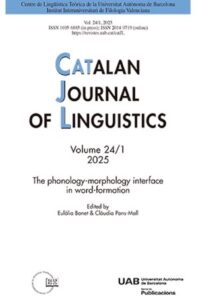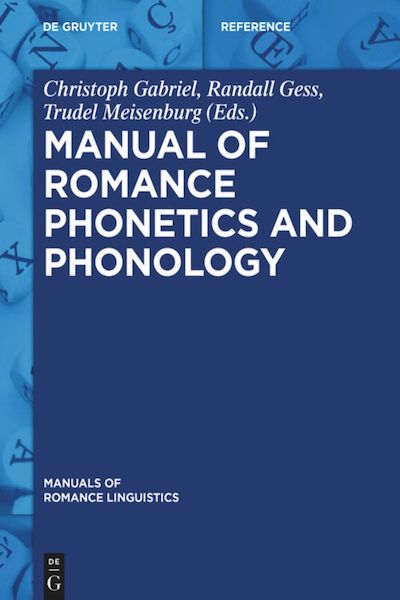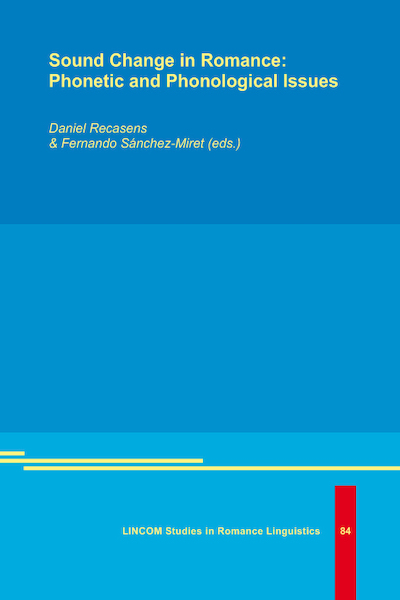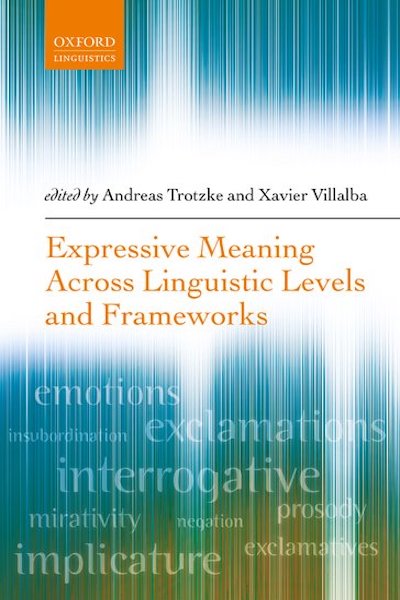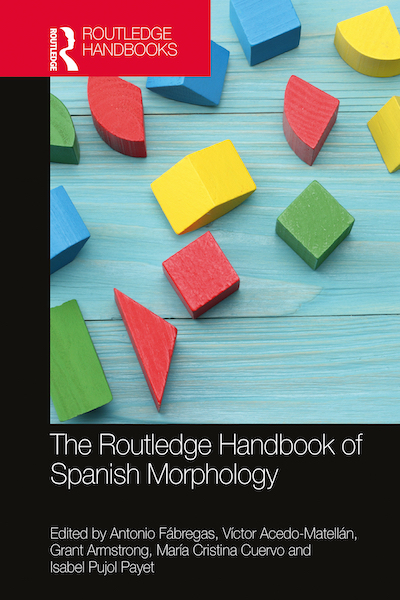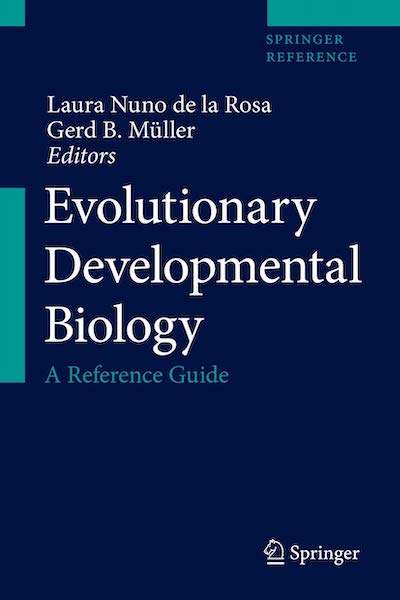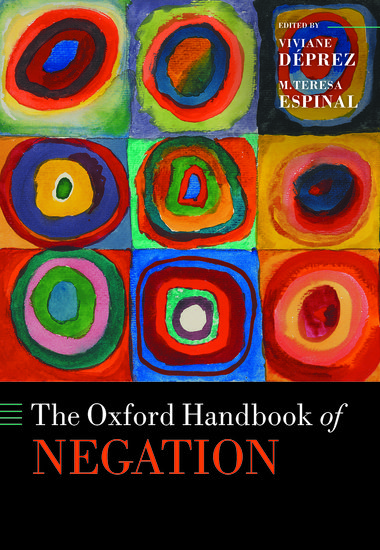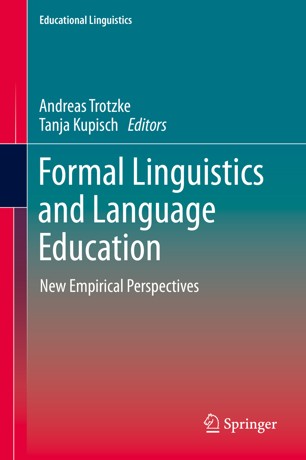
Autors:
Michael J. Kenstowicz & Teresa Cabré (ed.)Títol:
On loanword phonologyEditorial: Universitat Autònoma de Barcelona, Servei de Publicacions
Col·lecció: Catalan Journal of Linguistics #11
Data de publicació: 2012
Pàgines: 191
Text complet
The study of loanwords is almost as old as the study of phonology itself. In 19th century diachronic linguistics borrowed words were utilized to establish the relative chronology of sound changes as well as to explain exceptions to otherwise general sound laws. Loans can also shed light on the earlier state of a language that has been obscured by subsequent sound changes. In 20th century Structuralism loanwords were seen as a challenge to the thesis of a single unified sound system (Fries and Pike 1949). Within the generative tradition, the study of rules associated with a stratified lexicon was carried forward by McCawley (1968), Lightner (1972), and others. Another motivation for the study of borrowings was that loans could demonstrate the productivity of rules and constraints as well as to resolve alternative synchronic analysis (Hyman 1970). With the rise of a Constraints and Repair view of phonology in the 1980’s the study of loans in and of themselves was a natural step since the direct importation of a loan from the donor language typically violates some inventory or phonotactic constraint that must be modified (repaired) in order to conform to the native L1 system of the borrowing language (Paradis and LaCharité 1997). Loanword Phonology was given a significant boost by the development of Optimality Theory (Prince and Smolensky 1993, 2004), which provided a formal framework in which the adaptations could be studied (Yip 1993). With its key notion of faithfulness, OT can model the fact that modifications of the source word are typically minimal and only introduced to satisfy a constraint of the borrowing language. OT can also make sense of changes that go counter to native grammar repair by appeal to differential faithfulness with respect to markedness (Steriade 2001, Kenstowicz 2005). In many cases the native grammar offers no guidelines as to how a loan should be repaired. The fact that speakers seem to often converge on a particular repair raises serious learnability problems for these emergent strategies (Broselow 2009). Possible answers have included direct access to innate but low ranked UG constraints (Shinohara 2000, 2004, Kenstowicz and Sohn 2001), access to an internal P-Map that allows the speaker to compare alternative repairs and select the one that is minimal (i.e. most similar to the source word—Steriade 2009). Another possibily relevant factor is frequency: when two alternative repairs are available, choose the one that leads to the more frequent structure in the L1 lexicon (Kim 2012). The current literature is grappling with these questions of emergence and different repairs for what appear to be equivalent inputs. Their subtlety and sophistication is a testament to how far the study of loanwords has progressed; their difficulty is a challenge to all future research.

